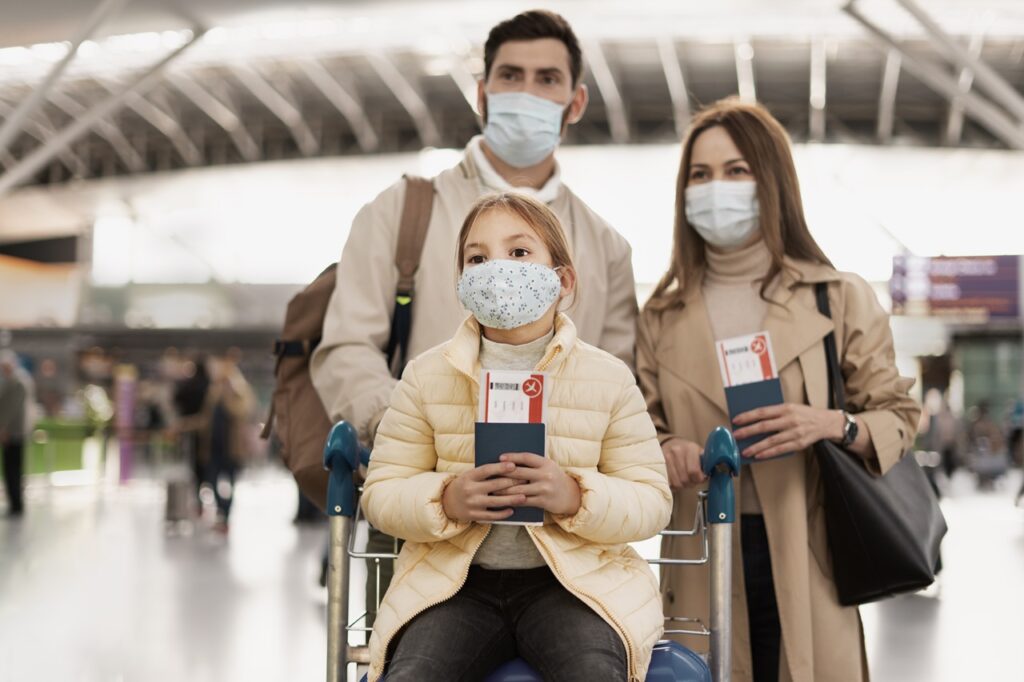It’s important to understand travel insurance exclusions, as they can mean the difference between a smooth resolution and being left footing a hefty bill after a travel emergency.
Exclusions like pre-existing conditions or adventure sports can easily result in denied claims if you’re not careful.
In this guide, we’ll cover common exclusions, why insurers include them, and how you can avoid unpleasant surprises. Knowing what’s not covered and what is ensures that your trip goes smoothly, with fewer travel dramas along the way.
What Are Travel Insurance Exclusions?
Travel insurance exclusions are specific situations or conditions that a travel insurance policy does not cover. These exclusions can include anything from adventurous activities like skydiving to medical issues related to pre-existing conditions.
Knowing these exclusions is important because it helps you understand what your travel insurance cover will and won’t protect against, especially when you’re lodging travel insurance claims.
Insurers include these exclusions to manage risks and keep premiums affordable. If every possible scenario was covered, the cost of insurance would skyrocket. Exclusions allow insurers to strike a balance between providing essential coverage—like emergency hospital expenses or missed connecting flights—and controlling costs.
By defining what isn’t covered, exclusions set clear boundaries for your policy. They help you avoid misunderstandings, so you know what situations require extra coverage or preparation.
Understanding these exclusions is key to making your policy work effectively for you, ensuring you’re covered for what matters most during your travels. Refer to your plan’s Product Disclosure Statement (PDS) for further information.
Common Travel Insurance Exclusions
Here are common exclusions found in most travel insurance policies.
1. Medical-Related Exclusions
Pre-existing conditions are one of the most common medical exclusions found in travel insurance policies. This is any sickness or injury you had during a certain time frame before purchasing your policy, and travel insurance policies usually doesn’t cover these conditions.
Mental health conditions can also be excluded by certain travel insurance providers, whether pre-existing or first-time conditions. Most other providers treat mental health as they would any other physical medical condition. Additionally, non-medical conditions, such as elective surgeries or cosmetic procedures, are generally not covered either. Always check the policy’s fine print regarding medical expenses.
2. High-Risk Activities and Adventure Sports
Most travel insurance policies exclude injuries from high-risk activities unless certain conditions are met or, in some cases, additional cover is purchased like motorbiking or quad-biking. Certain activities are excluded regardless of circumstance, including adventure sports like skydiving, scuba diving without the appropriate certification or beyond certain depths, and backcountry skiing.
3. Breaking the Law
Engaging in illegal activities while travelling can void your insurance. If you’re involved in drug use, smuggling, theft, or even something like a street race without proper permits, your travel insurance company won’t cover any claims resulting from these actions.
For instance, an injury you sustain during illegal racing will not be covered. It’s important to know the local driving rules and avoid breaking the law to keep your coverage intact.
4. Travelling Against Government Advice
If you’re travelling to a country for which the Australian government or other authorities have issued a travel advisory, your insurance may not cover you. Whether it’s due to conflict, natural disasters, or health risks, these advisories can impact your claim.
For instance, if you’re travelling to a conflict zone and need medical evacuation, you may not be covered by your travel insurance. Always check government advisory websites like Smartraveller or the Department of Foreign Affairs before booking your trip.
5. Intoxication
Most travel insurance companies won’t cover incidents that happen while you’re under the influence of alcohol or drugs. Policies often specify a Blood Alcohol Concentration (BAC) limit, beyond which your claim could be denied.
Any involvement with illegal drugs will also void your coverage. For example, if you end up in a hospital after a night out and are intoxicated, travel insurance cover will likely be denied.
6. Carelessness and Reckless Behaviour
Carelessness or reckless behaviour can easily void your travel insurance. Leaving your belongings unattended, ignoring safety instructions, or engaging in dangerous stunts may lead to denied claims.
For instance, if your laptop is stolen from an unlocked car, you likely won’t be covered. Being mindful of your actions is key to ensuring your cover remains valid.
7. Epidemics and Pandemics
Many travel insurance policies exclude coverage for epidemics and pandemics, such as the COVID-19 pandemic. While some insurance companies have adapted policies to include pandemic-related disruptions, coverage is not guaranteed.
For example, if a pandemic causes global travel disruptions, your policy may not cover the associated costs.
8. Self-Inflicted Injuries and Suicide
Injuries or death resulting from self-harm or suicide attempts are excluded from most travel insurance policies. For instance, if a traveller attempts self-harm during their trip, the insurance company likely won’t cover any related medical expenses or claims.
9. Participation in Professional Sports
If you’re engaging in professional sports, travel insurance typically won’t cover injuries. For example, if you get hurt while participating in a professional sports event, you will likely not be covered.
How to Read and Understand Policy Exclusions
Understanding policy exclusions is essential for knowing what travel insurance doesn’t cover. While policies can vary, most travel insurance providers include a section detailing specific exclusions. This section sets clear boundaries for what isn’t covered, helping you avoid surprises when it comes to claims.
To find the exclusions, start by reviewing the Product Disclosure Statement (PDS) provided by your insurer. This document lists all the key details, including exclusions.
Next, get familiar with common insurance terminology, as legal and insurance jargon can be confusing.
Here are a few definitions:
- “Exclusions” means situations or conditions where coverage doesn’t apply.
- “Pre-existing conditions” often refer to health issues you had before the policy’s start date.
- “Excess” refers to the amount you contribute in the event of a claim..
Mitigating the Impact of Exclusions
While travel insurance policies come with general exclusions, there are ways to reduce their impact.
One way is to purchase additional covers. These options can help extend your cover to include higher-risk activities like skiing or snowboarding.
Some insurers even offer tailored packages, allowing you to customise your policy based on your travel plans and needs. Our single trip international travel insurance is one such plan that features base level cover and a range of optional covers that help you create a plan specific to you.
Comparing Travel Insurance Policies
When comparing travel insurance policies, it’s essential to first assess your needs. Take a moment to think about your travel plans—are you going to a remote destination? Engaging in activities like scuba diving or skiing? These factors can influence the type of cover you’ll need from travel insurers or the conditions you should be aware of.
Understanding your specific requirements helps in narrowing down the right options.
Next, compare policies by reviewing exclusions and coverage limits. Look closely at what each plan covers, but also check what’s not covered, such as high-risk activities or pre-existing medical conditions. Make sure to find a balance that fits your trip’s unique needs.
Finally, weigh value against cost. While it’s tempting to go for the cheapest option, it’s crucial to ensure you’re not sacrificing essential cover. Comprehensive plans may cost more, but they may offer the additional security you need when the unexpected happens.
How to Choose the Right Travel Insurance Policy for Medical Evacuation Cover
When selecting the right travel insurance policy for medical evacuation cover, it’s important to assess your unique travel needs. Start by evaluating various factors to ensure you have adequate protection for your trip:
- Destination risks: Are you travelling to a place with high-quality medical facilities or a remote location with limited options?
- Activities planned: Will you be engaging in high-risk activities such as scuba diving or skiing, which may require additional coverage or awareness of certain conditions?
- Medical treatment access: Determine how easy or difficult it may be to access medical care in your chosen destination.
Ensuring these aspects are addressed will help you find the best cover for your medical evacuation needs. Learn more about medical evacuation cover here.
Understanding Policy Terms and Conditions
- Reading the Fine Print: Pay attention to detailed policy language regarding exclusions.
- Ask Questions: Contact your insurance provider for clarification on any unclear terms.
- Policy Flexibility: Consider the ability to customise the policy to your needs.
Tips for Travellers Regarding Travel Insurance Exclusions
Before your trip, it’s essential to prepare properly to avoid running into issues with your travel insurance provider. Here are some key steps:
- Medical Check-Up: Schedule a pre-travel health assessment to address any potential issues that may arise during your trip. This helps you avoid surprises that might fall under your travel insurance policy exclusions.
- Emergency Plan: Familiarise yourself with how to contact both your travel insurer and local emergency services at your destination. Having this information handy can save valuable time in an emergency.
- Travel Documents: Always carry copies of your insurance policy, medical information, and any other necessary documents. This will streamline communication with medical providers and your insurer if something goes wrong.
During Your Trip
While travelling, being mindful of your actions can prevent your claim from being denied due to policy exclusions:
- Stay Safe: Be cautious to minimise the risk of injury or illness. Following safety guidelines is essential for preventing claims from being denied.
- Avoid Exclusions: Familiarise yourself with activities or behaviours that could void your coverage, such as engaging in extreme sports or reckless behaviour.
- Local Laws and Customs: Respect local laws and regulations. Running afoul of these can lead to legal trouble, which could void your cover and lead to denied claims.
In Case of Emergency
In the unfortunate event of an emergency, taking the right steps can ensure smoother communication with your travel insurance provider:
- Immediate Medical Attention: Prioritise getting medical help promptly. This not only safeguards your health but ensures that your claim is taken seriously.
- Contact Insurer Quickly: Reach out to your insurance provider as soon as possible to facilitate medical assistance and avoid delays in claim processing.
- Documentation: Keep detailed records of all communications and medical reports. This is crucial for lodging a claim and ensuring that your insurer has all the information needed to process your request efficiently.
Understand Travel Insurance Exclusions and Limitations for Safety
Navigating travel insurance exclusions and limitations can seem daunting, but it’s essential to know what is and isn’t covered before your trip. Being aware of common travel insurance exclusions, like pre-existing conditions, high-risk activities, or careless behaviour, allows you to take steps to avoid uncovered scenarios.
With the right travel insurance, your trip can be both adventurous and secure—without worrying about hidden exclusions.
Ready to book your next adventure?
With Travel Insured Australia, you can travel confidently knowing you can be covered, even for the unexpected. We offer flexible, comprehensive plans to fit every type of traveller and trip.
Note that this blog provides a summary of the available coverage. Refer to the PDS for further information.




